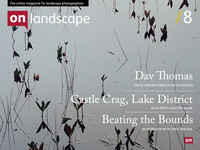More on what Digital photographers could learn from their Large Format cousins
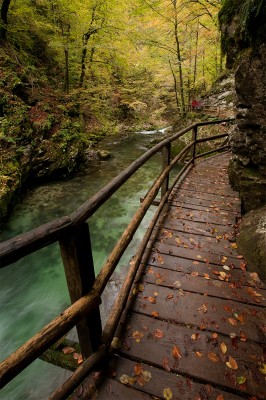 In my previous article on this topic, I concentrated on the physical characteristics of Large Format gear and how understanding these might help encourage digital photographers towards a slower, more considered approach.
In my previous article on this topic, I concentrated on the physical characteristics of Large Format gear and how understanding these might help encourage digital photographers towards a slower, more considered approach.
In this second and final article in the series, I look at two further workflow differences between film and digital, namely uncertainty and scarcity. In my discussion of these differences, I suggest that such technological advances as instant image review and near-infinite image storage can be more carefully managed in order to get the most out of them.
Digital photographers have the luxury of being able to review their image and histogram at the time of capture at no immediate cost. We can check our compositions, zoom in to locate tiny protrusions at the edges of the frame, identify any blown highlights or underexposed areas, check for focus, and (perhaps most importantly) check that the image has the desired emotional impact. We also have practically unlimited storage capacity for our images, even out in the field. The benefits are obvious, and operation of these tools is the subject of many technical articles. However, I think it's worth looking a little deeper at the impact this rich functionality has on the photographic process itself.
How much do we, as digital photographers, take these tools for granted? Are we getting the most we can out of this technology? Could having all of this information at our fingertips challenge the underlying creative process of photography? To see how the digital tools work for and/or against us, we can start by looking at photography without them: with film.
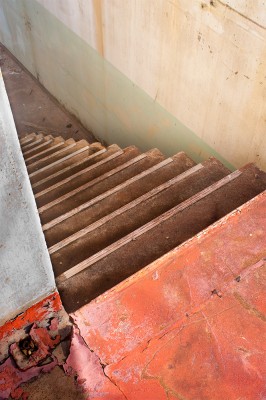 Film and Uncertainty of Result
Film and Uncertainty of Result
Film photographers, as we know, must wait to see the fruits of their labour until long after they have left the scene they attempted to capture. They must afford themselves the possibility that the image in their mind's eye may not have made it onto the film. Further, they must hope and trust that their method was accurate and precise enough to render their intent. Because they do not have access to instant visual feedback, film photographers must rely more heavily on the fundamental instruments common to almost all cameras: namely the viewfinder and light-meter.
Film and Scarcity
Film photographers also have to deal with having a limited amount of expensive film out in the field with them. This unavoidably imposes a clear limit on the number of images that they can make in one trip. In other words, when they are out in the field, film is a scarce resource. Large Format photographers represent the extreme case in terms of scarcity: they carry limited amounts of particularly expensive film with them.
Constraints or Opportunities?
There are two ways of looking at uncertainty and scarcity: as constraints or as opportunities. Those who argue that they are constraints will say that rapid, highly accurate feedback, such as that given by a standard dSLR LCD, provides for a shallower learning curve: you'll get things how you want them sooner rather than later. This, in combination with the ability to capture large numbers of images at no initial cost, gives you a powerful combination that sets you free to experiment with your images risk-free, and with immediate, constructive feedback on where you went wrong. Something I commonly hear that ties up this line of thinking nicely is that, “With a digital camera, on any given day, you'll end up with a higher percentage of 'keepers' than with film, and you don't have to pay for the ones you don't want.”
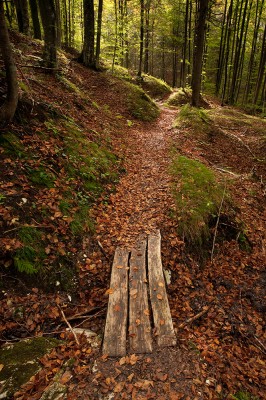 While there is no doubt that this can be true, for me it's missing the point somewhat. As you will have seen from my first article on this topic, I put a high value on a particular type of strong, graphic composition. I would estimate that 80% of the time I spend on any one image will be on getting the composition 'just so', and that is not counting the time spent finding that composition. So, overall, it's probably 95% finding the image, 5% using the camera to compose and capture it. In a given day of landscape photography, by the time I get to making my first image, I've surely already 'missed' hundreds of other opportunities. Having spent that 95% of my time looking, listening and thinking, why would I not spend the remaining 5% working through things methodically? “I'm here now and I've found something that speaks to me” is something I find myself thinking with excitement when I settle on a subject. Sure, the light could be changing quickly, but hopefully I've anticipated far enough in advance that I'll still have enough time to think everything through. And what if the light is changing quicker than I had thought? Knowing what I’m doing without checking the LCD frequently may even save me enough time so that I’m able to capture that coveted ‘fleeting image’. If not, then I will probably end up with an image that doesn't quite work: I will come away having learnt something, but with no 'tangible' result. So be it.
While there is no doubt that this can be true, for me it's missing the point somewhat. As you will have seen from my first article on this topic, I put a high value on a particular type of strong, graphic composition. I would estimate that 80% of the time I spend on any one image will be on getting the composition 'just so', and that is not counting the time spent finding that composition. So, overall, it's probably 95% finding the image, 5% using the camera to compose and capture it. In a given day of landscape photography, by the time I get to making my first image, I've surely already 'missed' hundreds of other opportunities. Having spent that 95% of my time looking, listening and thinking, why would I not spend the remaining 5% working through things methodically? “I'm here now and I've found something that speaks to me” is something I find myself thinking with excitement when I settle on a subject. Sure, the light could be changing quickly, but hopefully I've anticipated far enough in advance that I'll still have enough time to think everything through. And what if the light is changing quicker than I had thought? Knowing what I’m doing without checking the LCD frequently may even save me enough time so that I’m able to capture that coveted ‘fleeting image’. If not, then I will probably end up with an image that doesn't quite work: I will come away having learnt something, but with no 'tangible' result. So be it.
In this context, the rapid feedback that a digital camera provides me becomes a 'nice to have' rather than an integral part of the process that I 'can't live without'. Of course I'll make use of it when I need to – it would be daft and obstinate not to do so. Having gone through all of that walking, thinking and careful set-up, I want more than anything to come away with an image that I am ecstatic about. Reviewing the histogram and checking focus and exposure is a valuable toolkit for ensuring, as far as is possible, that I will do that. But that's where it ends.
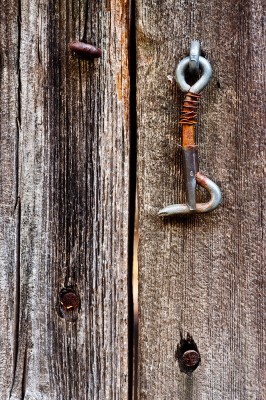 And what of that almost unlimited card space? Well most of it may well sit unused for a while longer, unless I'm on a particularly long trip. Certainly, it's nice that I don’t need to burn money in processing fees for some images that might not turn out as I'd hoped, but at the same time, if I've done the subject-finding, composition and execution to my satisfaction, then I shouldn't have too many worries regardless of the equipment that I'm using.
And what of that almost unlimited card space? Well most of it may well sit unused for a while longer, unless I'm on a particularly long trip. Certainly, it's nice that I don’t need to burn money in processing fees for some images that might not turn out as I'd hoped, but at the same time, if I've done the subject-finding, composition and execution to my satisfaction, then I shouldn't have too many worries regardless of the equipment that I'm using.
So, overall, what am I saying?
On scarcity and the cost of film: I'm not suggesting that such considerations are always at the forefront of a Large Format photographer's mind when out in the field. And I'm certainly not suggesting that digital photographers cannot come to the conclusion that making fewer images can be better (I have done). But surely knowing (or imagining) that you always have a limited number of potential images with you can help nudge you towards thinking of each exposure as what it truly is: a precious resource, rich with the possibility of self-expression.
And on immediate feedback: I think that if we are not careful, the rapid feedback provided by digital cameras can result in a glossing over of important aesthetic considerations in preference to chasing the elusive 'desired image' there and then. For me, this is akin to focusing on winning the battle whilst ignoring the fact that you're losing the war. You may have achieved the shot that you desired, but how much did you learn about yourself, your surroundings and how you interpret them? At the extreme, you may even be sacrificing your ability to create ever more compelling images in the future because you aren’t honing your craft now.
Those of us who use digital cameras are in many ways lucky not to be subject to the same constraints as our film brethren. But studying such constraints and how they affect workflow in the field offers a valuable opportunity for us to learn and grow as photographers.
 Ben Stephenson is a photographer who draws his inspiration from the natural world. Specialising in landscape and abstract macro work, he sees photography as a way of interpreting and sharing the beauty he experiences day-to-day. His photographs distil the complexity of the world into artful compositions that exhibit clarity, intensity and graphic simplicity. You can see more of his work, along with the work of his co-conspirators at www.incphoto.com
Ben Stephenson is a photographer who draws his inspiration from the natural world. Specialising in landscape and abstract macro work, he sees photography as a way of interpreting and sharing the beauty he experiences day-to-day. His photographs distil the complexity of the world into artful compositions that exhibit clarity, intensity and graphic simplicity. You can see more of his work, along with the work of his co-conspirators at www.incphoto.com

